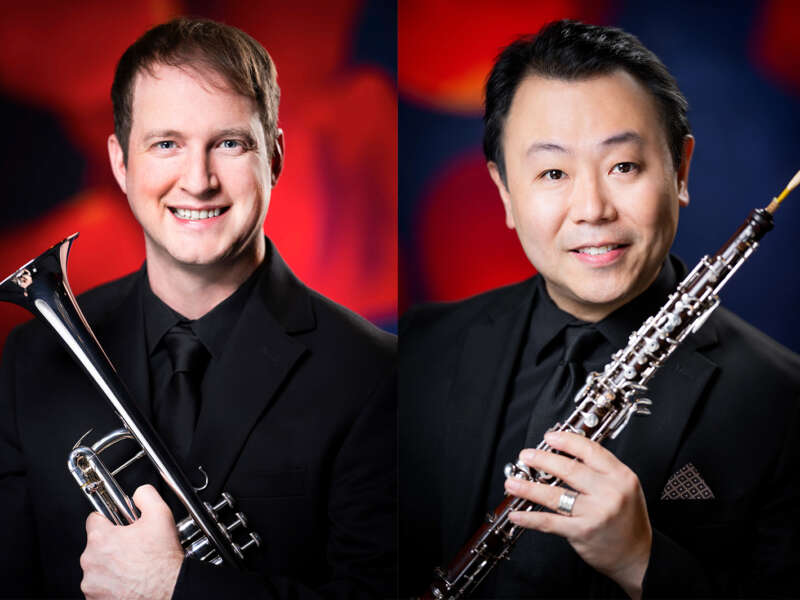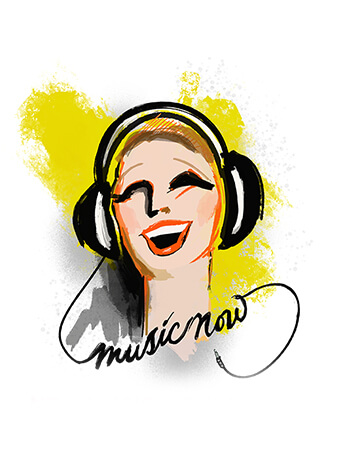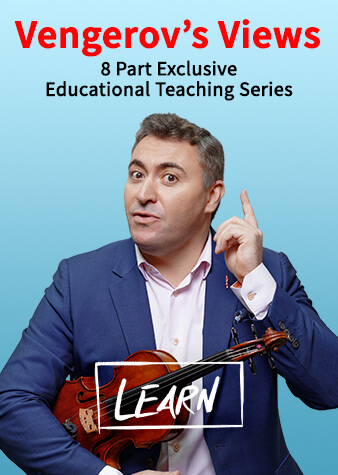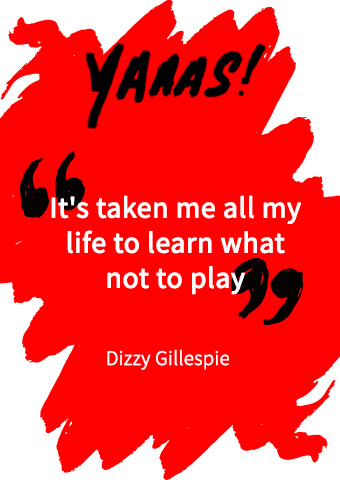Violin Pedagogue Grigory Kalinovsky on How to Achieve a Great Left Hand Technique
"What are the properties of a great left hand for string players and how can we achieve them?" We threw the question over to Jacobs School of Music pedagogue Grigory Kalinovsky.
Proper left-hand technique is fundamental for string players, as it brings comfort and ease when approaching our instrument. We have gone through the essential, common training ground of scales, etudes, and caprices to break down and reinforce key concepts of left-hand technique. Ultimately, we want to achieve expressive freedom but can only do so with a firmly established left-hand foundation. VC reader Josephine wanted to know more about ways to build an incredible left hand.
What are your tips for achieving a solid left hand? What are some points you keep in mind? Please leave a comment below, we are keen to know your thoughts.
Violinist Grigory Kalinovsky Discusses Key Components to Achieving a Great Left Hand
Dear Josephine,
That is an excellent question, which also presents an interesting challenge of trying to organize complex and numerous concepts into a few short paragraphs.
We should start by listing those properties of a great left hand that matter to the listener, and then try to break them down into technical concepts. From the listener’s perspective, what matters is the resulting sound, so to that end the main requirements from the left hand would be:
Intonation
Good intonation is the result of being able to strongly “pre-hear” the desired pitches in your head, adjusting for harmony, desired color, and ensemble intonation-matching needs, and then executing the required arm, hand, and finger motions to land the fingers in the right spots on the fingerboard. Since choosing the correct pitch variation for different tuning options is a subject of a whole separate book in itself, we will concentrate on technical concepts required to achieve consistency of intonation. These concepts are basically the same ones required for mastery of all the other skills listed above, so the ideas described below should hopefully also help you with stabilizing your intonation.
Hand setup
Efficiency of motion and minimal use of muscle tension are the two most basic requirements for achieving all of the above goals, so we have to start with the basic left hand shape (I don’t like to use the term “frame”, because to me “frame” implies tension). While different sizes and proportions of the hands necessitate slight adjustments, the basic shape remains the same - a relaxed half-closed “fist” with a slight (10-20 degrees) bent at the wrist, with the base knuckles pointing towards the scroll (“the beggar hand”). You can get a feel for this shape by lightly holding a watch or a medium-size keychain in your palm, and shaking your arm slightly in the direction of where the scroll would be if you were holding the violin – the weight in your palm should make the wrist feel relaxed, but springy (not collapsed!). The “utopian ideal” we are looking for is the sensation that individual fingers do not need to reach for notes - the hand shape provides each finger with the appropriate position for it to simply come down on the correct pitch. When playing double-stops or chords, you want to feel each chord as a “shape-folding” of the hand, rather than individual finger positions, which makes chords preparations much more fluid and effortless.
When stretching becomes necessary, the key is to never stretch by anchoring one finger against the fingerboard and stretching the others against it - that way leads to uncontrollable tension, which leads to the dark side. Rather, you create the appropriate stretch-shape “in the air”, maintain it using minimum tension in the hand and fingers, and touch the strings with the minimum pressure required to produce a clean sound. A good way to test if you are doing this correctly is to check if after placing the chord on the strings you are able to effortlessly glide up and down the fingerboard without changing the hand shape required for that chord. Practice achieving this by going through the double-stop or chord passages playing almost harmonics - putting just enough finger pressure on the strings to “guess” the correct pitch, but actually not aiming to produce a clean sound. At the same time, use the bow at normal pressure and power, willfully ignoring the “bad” sound that comes out. Once your hands get used to this inbalance, add just enough finger pressure to clear up the sound.
Shifting
The ideas above feed directly into the concept of effortless shifting – shifts should always feel “frictionless” (even when using a glissando) and must always be fluid, never jumping between positions - just faster or slower slides with lighter or heavier finger pressure, depending on the desired amount of glissando (think of a slow-motion video – that’s how shifts in fast passages should feel when practiced in slow tempo). Think of shifting motion starting at the shoulder joint, rather than the elbow – even a small shift starts as a slight rotation of the upper arm from the shoulder, dragging the rest of the machinery (arm/hand/finger) with it. The momentum of this motion takes the effort away from the smaller muscles, minimizing tension. Don’t think of the thumb supporting the finger pressure – rather think of the thumb balancing (cradling) the neck of the violin, while the other fingers play above.
Think of arrival notes not in terms of distances, but in terms of absolute coordinates on the fingerboard. Practice this by going through every shift playing an open string between the old and the new note – when you lift the old finger from the string, feel the hand completely reset back to the “beggar hand” sensation with a soft palm and zero tension in the base finger joints as well as between the fingers, then move the arm to bring the hand to the desired position. By “position”, I do not mean “3rd” or “4th” position, but rather a position that allows the new finger to come down on the right pitch without reaching for it, maintaining a relaxed hand shape. After doing that a few times, create the same “reset” sensation in the hand, but “forget” to lift the old finger, so it slides effortlessly along the string - if done correctly, this should give you control over any speed of the glissandi without ever feeling “stuck” to the fingerboard.
Articulation
The basic requirements for clean articulation are speed and lightness of finger motion (both coming down onto the string, and lifting away from it) – not strength! Think of this as a succession of lightning-fast impulses, followed by immediate relaxation (in either direction). When coming down onto the string, the finger swings from the base joint using only the momentum from the initial impulse, and the resulting pressure on the string should immediately diminish to the minimum required to maintain a clean sound. Practice this by dropping the finger down and releasing it to a harmonic upon contact with the string, as if the string is hot. When lifting the finger off the string, the impulse should be so fast that you almost feel your skin plucking away from the string (even though you are not using any pizzicato-like sideways motion). This upward impulse should be followed again by immediate relaxation. Practice the relevant Schradieck or Sevcik exercises starting from a very slow tempo but with very fast impulses, so that you feel each sequence of impulse and release separately, gradually increasing the tempo.
Vibrato
Vibrato is a rhythmic bending of the pitch downwards from the note, with the variations in amplitude and speed of the oscillations producing the different vibrato colors. This bending of the pitch is achieved by the fingertip rolling down away from the pitch and then back to it, using either hand motion (wrist vibrato), elbow motion (arm vibrato), or a combination of both, depending on the desired vibrato character. The key ingredient in all types of vibrato is the effortless bending of the top finger joint, and thus the most important skill to master is maintaining finger pressure on the string while keeping the top finger joint relaxed. This is achieved by learning to stabilize the middle joint of the finger, while keeping the base and the top joints almost completely inert. Although the articulation comes from the swing of the finger at the base joint, once the finger is on the string, the required pressure should only come from the middle joint – never from the base joint, as this will result in the top joint locking forward, ruining any chance for producing an effortless vibrato motion. To find this sensation, try holding a pencil with the middle joint of your finger (2nd finger is the easiest to start from) by bending the finger at the middle joint around the pencil while trying to get the tip of the finger to be inert, so you can easily flip it back and forth using a finger of your right hand (similarly to using a finger to “flap your lips”). Once you learn this sensation and are able to reproduce it with a finger on the string, practice controlling the actual arm or wrist vibrato motion by playing four beats to a bow with the metronome at around 60bpm, building up the speed of oscillations from 8th notes (one down-up pulse per beat), going through triplets, 16th notes, sextuplets, and finally 32nd notes (4 down-up pulses per beat), maintaining same amplitude (interval) of the pitch bending and relaxed even oscillation motion. Use four to six bows for each rhythm, and ideally practice this entire exercise separately for arm, wrist, and combination vibrato.
Other things to consider:
-Great intonation (tempered or expressive, as needed)
-Clean articulation (equally clear in upward and downward runs)
-Mastery of shifts (from light and seamless change of positions to thick expressive glissandi)
-Varied, expressive vibrato (and control to use it judiciously)
-Effortless execution (no one wants to see you suffer)
While the above ideas are just the tip of the iceberg, I hope they give you a starting point to think about your left hand goals and ways to achieve them. I wish you the best of luck on this journey!
-Grigory
Do you have a burning question for one of the Pros? Simply email: [email protected]
A graduate of the Manhattan School of Music, where he studied with Patinka Kopec and Pinchas Zukerman, Grigory currently serves on the teaching faculty at the Indiana University Jacobs School of Music, the Pinchas Zukerman Young Artists Program, and the Heifetz International Music Institute.
april 2024
may 2024

























![VC WEB BLOG | Violin Pedagogue Grigory Kalinovsky – ‘Which Classes Should Every Conservatory Student Be Taking?’ [BLOG] - image attachment](https://theviolinchannel.com/wp-content/uploads/2018/10/Grigory-Kalinovsky--800x600.jpg)

